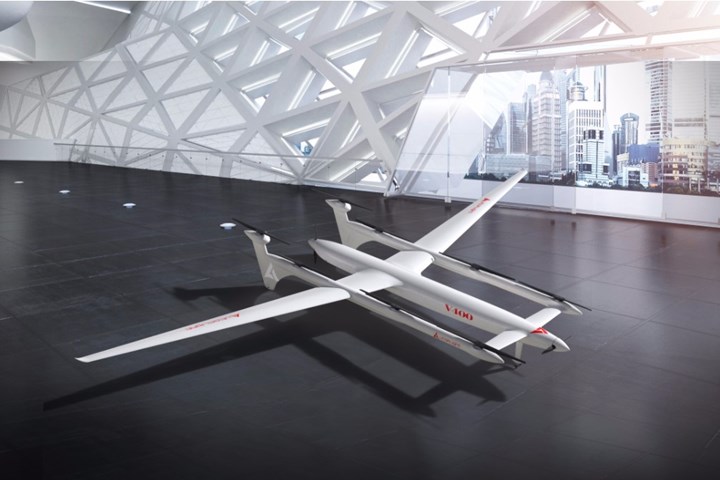Autoflight premiers carbon fiber eVTOL aircraft
The V400 Albatross eVTOL aircraft has a canard layout design and the whole machine body incorporates carbon fiber for lighter weight, strength and rigidity.

Photo Credit: Autoflight
It was reported on Sept. 13 that the eVTOL developer Autoflight (Shanghai, China) premiered its composites-intensive vertical take-off and landing (eVTOL) aircraft V400 Albatross for the global market at the 2020 World UAV Drone World Conference (Shenzhen, China).
The company also announced its corporate strategic plan for the first time, including the company’s focus on large-scale intelligent logistics aircraft and "air taxi" self-driving manned aircraft as the main product layout, as well as the building of an air logistics operation system and a 3D air travel method to create the future of urban air mobility (UAM).
V400 Albatross, independently developed by Autoflight has a maximum take-off weight of 400 kilograms and a maximum load of 100 kilograms. According to the company, there are two power versions to choose from: The pure electric version has a full-load cruising range of 300 kilometers, and the hybrid version has a full-load cruising range of 1,000 kilometers. Compared with other leading eVOLT aircraft, says Autoflight, the V400 Albatross has the advantages of long endurance, large payload and intelligence.
V400 Albatross adopts a canard layout design, which is said to have a higher lift-to-drag ratio than the traditional layout, and achieves good aerodynamic performance. Further, the whole machine body incorporates carbon fiber for lighter weight, strength and rigidity. The whole body is said to adopt a three-axis layout to ensure higher reliability and strength characteristics.
Further, the V400 Albatross is said to closely integrate aerodynamics and electric propulsion technology. It is equipped with a flight control with completely independent intellectual property rights and a high power-to-weight ratio motor electronic control system. The lift part uses eight sets of motors, and the thrust part is provided by two sets of power sources. With thrust, it can take off and land vertically and hover in the air like a multi-rotor drone, and it can fly horizontally like a fixed-wing aircraft.
In terms of safety, says Autoflight, the V400 Albatross strictly adopts aviation system development standards. In addition to an eight-liter two-push multi-redundant control system, a multi-redundant flight control system and a ground radar assisted remote takeoff and landing function, the aircraft retains a complete parachute system to ensure flight safety.
The V400 Albatross can fly autonomously, has the ability to intelligently sense and avoid in the air, and reportedly supports seamless connection with 4G/5G networks. According to the company, the aircraft will be used in scenarios such as express logistics, emergency material transportation, medical rescue and fire emergency response, especially in mountainous and island transportation scenarios.
Related Content
-
Numerical tool with mean stress correction demonstrated for fatigue life estimation of thermoplastic composites
To aid design of fatigue-resistant structures, Econ Engineering has developed an algorithm to evaluate ply-based cyclic stiffness degradation combined with an FE failure check, validated for a CF/PAEK pressure vessel.
-
Improving carbon fiber SMC simulation for aerospace parts
Simutence and Engenuity demonstrate a virtual process chain enabling evaluation of process-induced fiber orientations for improved structural simulation and failure load prediction of a composite wing rib.
-
Optimizing a thermoplastic composite helicopter door hinge
9T Labs used Additive Fusion Technology to iterate CFRTP designs, fully exploit continuous fiber printing and outperform stainless steel and black metal designs in failure load and weight.













.jpg;maxWidth=300;quality=90)

